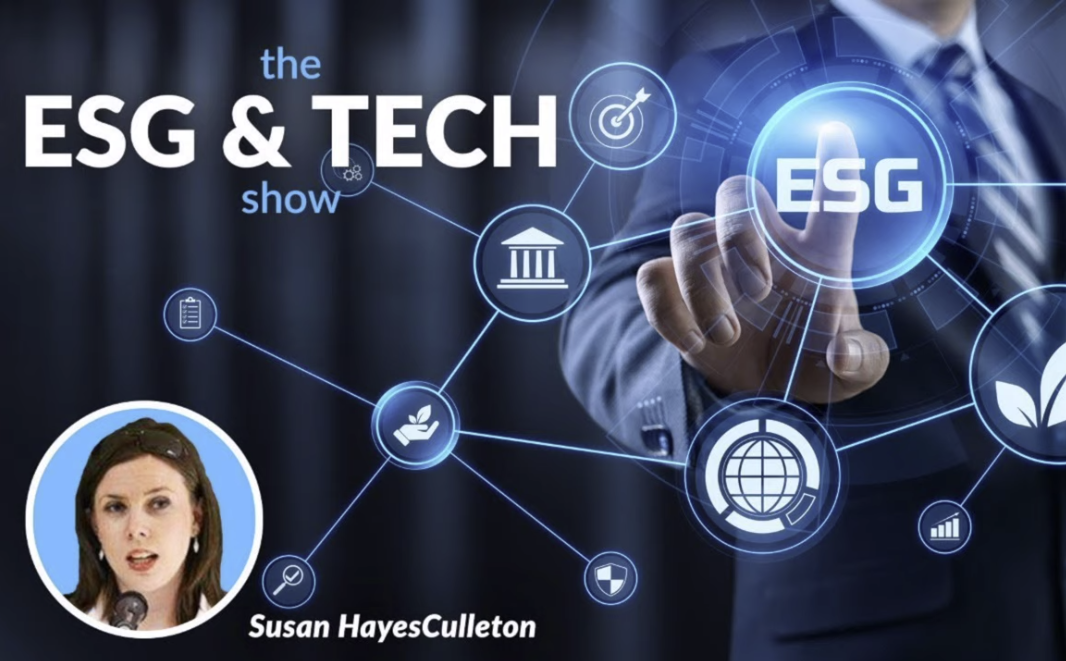Augmented Reality (AR) –
Leaders and Trend Setters
Over time, we’ve seen Augmented Reality move from being a futuristic concept to having use cases in education, interior design, planning, museums, and other environments where the virtual and physical worlds overlap. As per recent Statista data, by 2024 there will be an estimated 1.7 billion mobile augmented reality (AR) users worldwide, a rise of 1.5 billion from the 200 million seen in 2015.
In the latest ESG & Tech Show episode, I focused on what’s underpinning this growth, the new business models that are developing along the way, and of course, the stocks to analyze. If you’ve ever built a PowerPoint slide, you already have a very good idea of what AR means. You start with a blank slide and then add layers of text and images. In this case, you’re “augmenting” the reality of that slide. You might then add clickable objects or buttons that can lead to different slides. That is adding a layer of interactivity to that blank canvas. If you’re with me so far, then imagine those very same ideas only being applied to buildings, open spaces, and any other physical plane! Virtual reality goes another step by immersing your senses (i.e. sound, vision, and perhaps touch) with a headset and joystick so that it does feel like you’re in another world. Naturally, as soon as we talk about this, we’re going to move into metaverse territory. As a simple explanation of that, the metaverse is the transition of a 2-dimensional web world where you can see everything on a flat screen (i.e. those people tuning into the show could see what I was doing on a square box in front of them) to a 3D digital experience (i.e. where those watching the show would feel like they were sitting opposite me in VectorVest’s super training center in North Carolina!
According to Statista, the 74% of adults in the US are either joining or considering joining the metaverse for various reasons as of December 2021. Specifically, 41% of adults want to experience things they can’t in a physical reality. Imagine bringing your whole extended family around a table to share a meal together despite them being wherever they live all over the world. Facebook shared a blog post recently bringing Europe into the spotlight quoting “This is an exciting time for European tech. The EU has a number of advantages that make it a great place for tech companies to invest — a large consumer market, first-class universities, and, crucially, top-quality talent.”
Let’s take a look around the world and look at some use cases of this newer area. Personally, we were choosing the colors for our house last November and we used an AR app called “Dulux Visualiser” to visualize what the rooms would look like with different palettes with a tap on the screen. TechSheCan, an initiative in the UK, showcases “Dress X” as a company that is creating digital looks for people who want to dress differently in their social media photos without actually buying and shipping the clothes. The “BEYOND” conference had panels of people talking about applying augmented reality to help communities’ make decisions on large-scale infrastructure projects, museums offering different interactions to different demographics, and turning cities into open-air historical experiences. Microsoft’s “Mesh” is endeavoring to make a metaverse for the workplace.
In an insightful ZD piece, Aarron Spinley and Paul Greenberg, distill these changes into seven clear business models:
- Infrastructure – we need the physical environment to connect our devices together with hardware and the support systems for software.
- Human interface – the glasses and headsets needed to see augmented and virtual realities.
- Decentralization – blockchains and other distributed forms of dispersing data.
- Spatial computing – the technology needed to look at every aspect of a 3D web.
- Creator economy – the production of assets to be used and consumed solely within a virtual world.
- Discovery – the evolvement of search engines and engagement tools for users to connect with the content and experiences they’re seeking
- Experiences – designing a way that individuals can interact in entirely new ways in education, eCommerce, events, the workplace, etc.
These new places are turning places of dreams into genuine experiences and planes for people to interact. In fact, CNBC reported in February that “Metaverse real estate sales top $500 million (in 2021), and are projected to double this year”. Bank of America projects “The global metaverse market could grow to $800 billion by the mid-2020s”.
As we turn to the companies leading the way in these areas, we analyzed a range of stocks. In the US, we looked at NVIDIA, Apple, Meta, Microsoft, Nike, Unity Software, and Matterport. Some of these are big names in this area already and others are moving into this area from a very traditional place.
During the episode, I took the audience through three key questions:
- Does the stock have the momentum of buyers behind it or is it being pushed down by sellers?
The Relative Timing indicator is computed from an analysis of the direction, magnitude, and dynamics of a stock’s price movements day-over-day, week-over-week, quarter-over-quarter, and year-over-year. If a trend dissipates, RT will gravitate toward 1.00. Apple’s RT was 1.18 while Matterport had an RT of 0.06. Clearly, Apple has much more momentum powering its short term performance both in comparison to the other stock as well as in general.
- Why do some stocks have a “Sell” recommendation?
VectorVest computes its own proprietary stop loss for every single stock right across the board. This is computed from a 13 week moving average of its closing prices and is fine-tuned according to the stock’s fundamentals. If a stock’s share price falls below this stop loss, then it triggers a Sell recommendation. At the time of the show, Unity and Matterport had “Sell” Recommendations.
- Which stocks have the greatest long-term price appreciation potential?
Many of the companies we discussed in the episode are investing in their long-term futures as this trend moves from the sidelines into the mainstream. Therefore, it’s worthwhile to consider their stock’s valuation respectively into the longer term. Specifically, Relative Value is computed from an analysis of projected price appreciation three years out, AAA Corporate Bond Rates, and risk. Meta was the standout candidate here with its Relative Value as high at 1.61 and NVIDIA following closely behind with 1.54.
Join our mailing list for the ESG & Tech show so that you’re always updated about our new episodes and get the resources right afterward at www.vectorvest.com/fff
What you should do next…
- Get our latest blogs delivered right to your inbox, subscribe to our newsletter.
- The market moves fast! Get our most current evaluation of this stock with our FREE stock analysis tool.
- Looking for stock picks? Not sure if now is the right time to buy/sell? For a limited time, enjoy the full benefits of a 30-day subscription to VectorVest for only $0.99 (usually up to $148/month) . Get access to our full list of screeners showcasing our top stock picks that tell you exactly what to buy, when to buy, and when to sell.








Leave A Comment